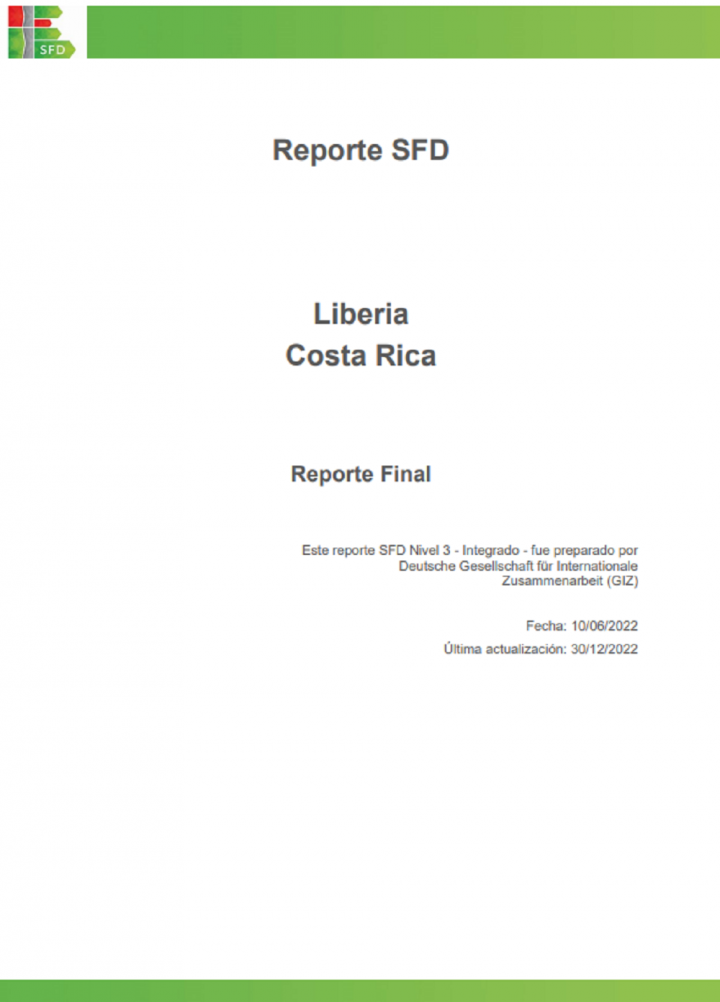
Published in: 2022
Pages: 60
Publisher:
GIZ
Uploaded by:
SuSanA Admin
Partner profile:
common upload
1056 Views
42 Downloads
Location of library entry
The site for this study, Liberia, is the first district and capital city of the canton of Liberia, in the province of Guanacaste, Costa Rica. It is located in the northwest corner of the country. Liberia is divided into five districts; Cañas Dulces, Curubandé, Liberia, Mayorga and Nacascolo. The Liberia district is the largest, covering an area of 561.57 km2. The district has experienced rapid demographic and urban growth in recent years. The last census (2011) indicated its population was 54,656.
The Costa Rican Institute of Aqueducts and Sewers (AyA) governs and manages both drinking water and wastewater in Liberia. With respect to the service outcomes along the service chain, approximately 14.2% has sewage services and 80% has on site sanitation systems (septic tanks). The rest have direct access to ditches/rivers, latrines and, to a lesser extent, open defecation is practised.
Most of the septic tanks are self-constructed by the property owner and consist of perforated sewer pipes or pits with stones at the bottom. The surveyed households revealed that some septic systems have not removed faecal sludge for more than three years. There are also systems that have been built for more than 10 years, requiring maintenance to ensure their correct operation.
Faecal sludge removal and transport services are provided by independent providers or small private companies, mostly mechanically. Truck capacity ranges from 2.5 to 35 m3. Many suppliers operate in the informal sector, since they are not complying with some or any of the legal requirements established by law for the provision of these services. Consequently, they dispose sludge directly into sewer drains or the river, which is illegal. Collected wastewater is processed at the WWTP in the city of Liberia. The technology used is a facultative lagoon system, whose effluent exceeds the discharge standard in most cases.
The SFD graphic shows that 22% of the excreta generated is safely managed in the Liberia district, and 78% of the excreta generated is unsafely managed
Bibliographic information
(2022). SFD Comprehensive Report - Liberia, Costa Rica. GIZ
Filter tags
Latin America & Caribbean Politicians and local decision makers Practitioners SFD Report Spanish














